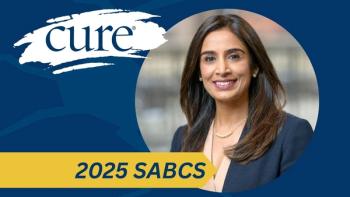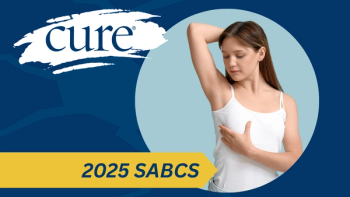
Cholangiocarcinoma: Understanding Potential Paths For Treatment
There are multiple treatment patients for patients with cholangiocarcinoma, here's what you need to know about them.
Cholangiocarcinoma (CCA) is the medical term for a rare type of cancer that occurs in the bile duct(s). Each year, < 6 out of 100,000 people will be diagnosed with
If CCA is caught in its very early stages, it can sometimes be managed by surgically removing the tumor. In most cases, patients in the early stages of CCA don’t experience symptoms and/or even know they have cancer. By the time they begin to experience symptoms, it is unlikely that the cancer will be manageable with surgery. Radiation therapy is one kind of treatment that may be used in such cases. It uses high energy x-rays or other types of radiation to kill cancer cells or stop them from growing. This therapy can be given either through a machine that will send beams of radiation to the area of the tumor or with special radioactive substances that will be sealed and placed in the body near or in the tumor. Another treatment option that may be used is chemotherapy. Chemotherapy is a medication or combination of medications that cause cancer cells to die and stop dividing. Chemotherapy has widespread effects, however, and kills both cancer cells and healthy cells. Different types of chemotherapy drugs work in different ways, so they are often combined. The widespread effect of chemotherapy accounts for many of its side effects and reduces the ability to fight infections. Immunotherapy is another treatment option. It boosts the body’s own immune system to help it fight off the cancer. The treatment types described may be used in various sequence combinations depending on the specific needs of the patient.
Finding an effective therapy for patients who have not responded well to their first treatment is particularly difficult, and the challenge becomes greater with each subsequent treatment. Targeted therapy is an option that can be used in CCA for patients who have failed prior therapy. Unlike chemotherapy, which affects all cells of the body, targeted therapy drugs aim primarily at specific molecules that help cancer cells grow and survive and less at healthy cells. (
Doctors look for gene mutations by taking a sample of tissue or blood and doing special laboratory tests to look for different molecular markers that indicate gene alterations. These markers are the targets for treatment and help doctors and their patients choose the best treatment. About 50% of of patients with CCA have a specific marker, or gene alteration; 25% of patients have an alteration in a gene called FGFR (fibroblast growth factor receptor gene) (
Clinical trials
Clinical trials are rigorous scientific research studies of potential new treatments. They are conducted using approved methods and are closely monitored to make sure that the proper procedures are followed and that no unexpected safety issues emerge. The FDA requires data from clinical trials when deciding whether to approve or reject a new drug. We would not have the treatments we do today without past clinical trials and the patients who made them possible. Although there is no guarantee, the patients who participate may benefit from the study drug, which would otherwise be unavailable to them. They also have more frequent contact with medical staff who monitor their progress.
Participating in a clinical trial is also an opportunity to contribute to science and help future patients. Two large surveys have shown that contributing to science to help future patients is the most common reason that patients enroll in clinical trials. In 1 survey, 67% of patients said they would recommend participating in a clinical trial for a loved one or friend. (
Clinical trials are conducted in 3 main phases. Each phase is designed to answer a different question about the study drug(s) or treatments. Phase 1 trials are designed to test the drug’s (or combination of drugs’) safety in a small number of patients. These trials do not evaluate whether the drug will help to control or cure a disease. If the drug is considered safe, it will move into Phase 2 testing. Phase 2 evaluates the drug’s safety and efficacy (how well it works) in a larger number of patients. If Phase 2 trials show that the drug works, it will move on to Phase 3 testing. (
Phase 3 clinical trials generate the data that the FDA reviews when deciding whether to approve a new treatment. These trials compare the safety and efficacy of the study drug to that of the drug(s) currently used to treat the condition. Phase 3 typically enrolls hundreds of patients and assigns each patient to 1 of the treatment groups randomly. Randomization ensures that each treatment group is similar in every way possible except for the treatment they are given. Each patient has a 50/50 chance of being assigned to the study drug, so treatment groups should have roughly the same percentage of women vs men, old vs young, Black vs White vs Latinx, etc. If the results show that 1 drug is better than the other, researchers can then be sure it is truly related to the drug and not to some unexpected or unknown influence of gender, age, race, etc.
Phase 3 trials also use double-blind procedures. Double-blind means that neither the patient nor the study doctor knows which treatment someone has been assigned to until the study is complete. This technique is important to negate bias and expectations from influencing patient or physician ratings of drug side effects or efficacy. For example, even patients receiving a placebo—a sugar pill with no active drug—report treatment benefit and/or side effects if they believe they are receiving the active drug. In the same way, patients and doctors may view symptoms or side effects differently if they know which medication a patient has been assigned to vs if they do not.
Patients who enroll in clinical trials need to understand that, in most cases, there is no guarantee that they will get the study drug or that the study drug is better than the standard-of-care drug. The clinical trial team is in frequent contact with enrolled patients to monitor their response to treatment, as well as any side effects or concerns. Participation in a trial is always voluntary, and patients can decide to withdraw from the trial at any time without penalty. It is also important to understand that clinical trials are conducted according to predetermined methods, and every patient will be treated according to those methods. The study doctor is not acting as your personal doctor but can share your test results with your personal doctor if you provide permission.
Enroll in a clinical trial and become part of the team that helps to bring new treatment options to patients with CCA.
For more information about infigratinib clinical trials near you, call QED Therapeutics at 1-877-280-5655, or visit [email protected], or go to www.clinicaltrials.gov.





